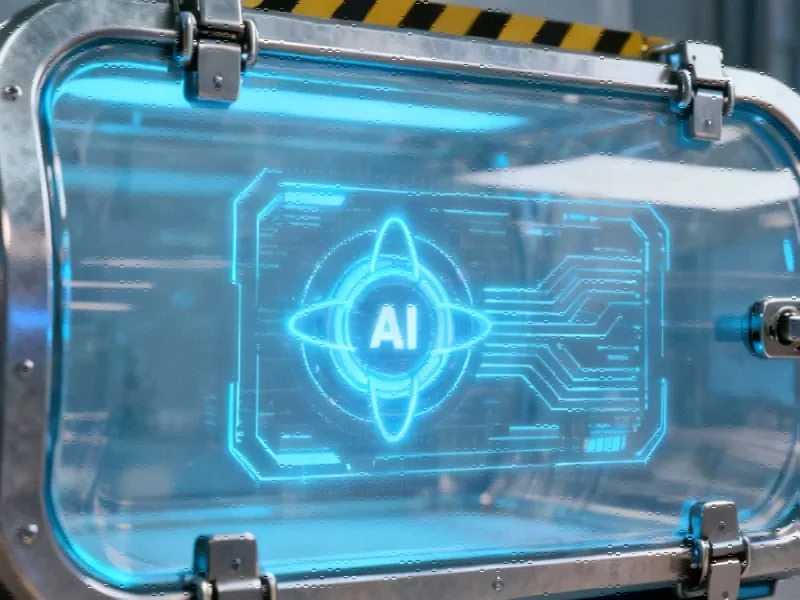The New Frontier of AI Governance
In a landmark collaboration between artificial intelligence developers and government agencies, Anthropic has implemented sophisticated safeguards to prevent its AI systems from assisting with nuclear weapons development. This partnership represents a significant step in addressing the complex ethical challenges posed by advanced AI systems, particularly in sensitive national security domains. The initiative demonstrates how industry developments in AI safety are evolving beyond theoretical frameworks into practical implementations.
Technical Implementation of Nuclear Safeguards
Anthropic’s collaboration with the Department of Energy and National Nuclear Security Administration involved deploying Claude AI within Amazon’s Top Secret cloud environment. This secure infrastructure allowed nuclear experts to systematically test the AI’s responses to nuclear-related queries and develop what Marina Favaro of Anthropic describes as a “nuclear classifier.” This sophisticated filtering system acts as a conversational watchdog, identifying when discussions approach dangerous nuclear territory without impeding legitimate scientific discourse about nuclear energy or medical applications.
The development process required months of refinement to balance security with utility. “It catches concerning conversations without flagging legitimate discussions about nuclear energy or medical isotopes,” Favaro emphasized. This precision reflects the nuanced approach needed for recent technology implementations in high-stakes environments.
Assessing the Actual Nuclear Threat from AI
While the collaboration addresses legitimate concerns, it’s important to contextualize the actual risk. Nuclear weapons manufacturing represents a solved scientific problem with much foundational knowledge being decades old. As demonstrated by nations like North Korea, determined states can develop nuclear capabilities without AI assistance. However, the concern lies in AI potentially accelerating or simplifying certain aspects of weapons development, particularly for non-state actors or less sophisticated programs.
The partnership between Anthropic and government agencies reflects a proactive approach to potential future risks rather than responding to documented incidents. This forward-looking strategy aligns with broader market trends in AI governance and safety protocols.
Broader Implications for AI Security
This initiative establishes important precedents for how AI companies and government entities can collaborate on security matters. The development of a controlled but unclassified list of nuclear risk indicators enables broader implementation across the AI industry while maintaining necessary security protocols. This balanced approach could serve as a model for addressing other sensitive domains where AI assistance could pose risks.
The technical methodology developed through this partnership represents significant advancement in AI safety measures. Unlike simple keyword blocking, the nuclear classifier employs contextual understanding to distinguish between harmful and legitimate nuclear discussions. This sophistication reflects the evolving nature of related innovations in AI security frameworks.
Future Directions and Industry Impact
The success of this collaboration suggests similar approaches could be applied to other sensitive areas such as biological weapons, advanced cyber warfare techniques, or critical infrastructure protection. As AI systems become more capable, establishing robust safety protocols through government-industry partnerships will likely become standard practice.
This development occurs alongside other significant technology sector transformations, including shifting platform preferences in enterprise computing environments. The intersection of these trends highlights how security considerations are influencing multiple aspects of the technology landscape.
Meanwhile, the broader security community continues to address digital threats, as evidenced by international law enforcement operations against cybercrime networks. These parallel efforts demonstrate the multifaceted approach required to maintain security in an increasingly digital world.
The partnership detailed in the priority coverage of Anthropic’s government collaboration represents a significant milestone in responsible AI development. As organizations navigate these complex security landscapes, many are also evaluating their foundational technology choices, including the growing migration from Windows 10 to alternative platforms driven by both security and operational considerations.
Conclusion: A New Paradigm for AI Safety
The Anthropic-DOE partnership establishes a valuable template for addressing AI safety concerns in sensitive domains. By combining government expertise with industry technical capabilities, this initiative demonstrates how proactive measures can mitigate potential risks without stifling innovation. As AI systems continue to advance, such collaborative approaches will likely become increasingly essential components of comprehensive national security strategies.
This article aggregates information from publicly available sources. All trademarks and copyrights belong to their respective owners.
Note: Featured image is for illustrative purposes only and does not represent any specific product, service, or entity mentioned in this article.



